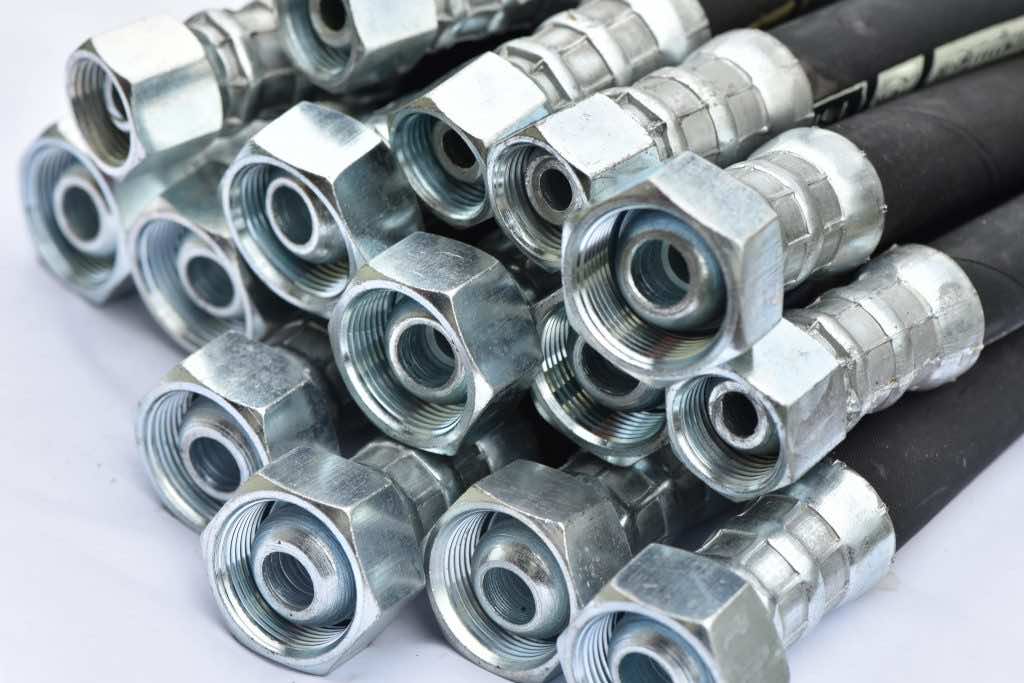Hydraulic fittings are used to connect a hydraulic hose and components, such as tubes, pipes, and cylinders. Once connected, the hydraulic fitting works by allowing fluid to flow, change its direction, mix, or divert.
Hydraulic fittings differ in types and applications and can create a tight seal and prevent leakage. With so many options in the market, most people get confused about the right choice.
If you are looking for the right hydraulic fittings, this article may come in handy as it offers a detailed guide.
Choose The Right Hydraulic Hose Fitting Material
Hydraulic hose fittings are available in different materials that define their properties. Yet the most common ones we see are plastic, brass, and stainless steel.
If you are looking for something more resistant to corrosion, then plastic fittings are more appropriate. However, they are weaker and less durable, especially in high-pressure ratings that may overpower them.
Unlike plastic, steel fittings are more durable with improved resistance to heat as they mix iron and other metals. Another popular choice is stainless steel hydraulic fittings that can withstand a highly corrosive environment with a high rating of 10,000 psi.
The least popular fitting is brass, as it’s less strong and durable than stainless steel. It can withstand temperatures that range between –65 and 400 degrees, though, with a pressure of up to 3,000 psi.
So, choose the right material depending on the desired temperature range and the right pressure for the job. Moreover, consider the budget you are working with as the choices differ in price depending on the quality offered.
Know Your Preferred Size
Thinking that you don’t need to go through the measuring process may get you in trouble of getting the wrong fit. Luckily, the measuring process isn’t difficult, and it will ensure you get fittings and hoses that match perfectly and prevent hydraulic leaks in the long run.
To find the right size of hydraulic fittings, you may need to get the right length, angle, thread gauge, and diameter component. First, lay the hydraulic fitting on a table, then stretch out a measuring tape across the top part. Ensure you take safety precautions every step of the way.
Using your ID/OD calipers, determine the outside diameter of the fitting. Next, place the calipers on the outer part of the fitting and open the jaws to ensure it rests securely between them.
After ensuring it’s well secured in the jaws, close down the clippers so that both jaws touch the exterior of the fitting. Afterward, the number on the top scale will be the right reading for the diameter outside.
When measuring the size, ensure that there isn’t a gap between the gauge teeth and the newer fitting. If you are lucky, you may get fitting with the provided thread identification, and all you need to do is match the relevant chart to the actual thread measurement.
Consider The Pressure
When choosing hydraulic fittings, ensure that they’re suitable for the pressure range to avoid damage. You can easily get the pressure ratings of the hydraulic fittings directly from manufacturers’ websites. However, you need to select the maximum working pressure above the system’s working pressure.
To get the maximum working pressure of the system, consider all the variables’ lowest-rated working pressure. In addition, pay attention to the testing of hydraulic fittings by considering the pressure ratings.
Likewise, consider the design of any hydraulic system, including standard ratings for hose and tubing components and assemblies, and get the rated working pressure for each system component.
Consider The Temperature Of Medium And Ambient
When considering the temperature of media and ambient, the hose should be able to exceed or meet the highest media and ambient temperature of your application. The material used, plating, and the seal type will affect the hose fittings’ operating temperature range.
Take The Application Of The Hose And Tube Fitting Into Consideration
The fitting can also be determined by the type of application, including tee or cross-fittings used for distributing or mixing applications. For instance, if the system requires connecting and disconnecting the hose, go with hydraulic quick-connect fittings.
Bottom Line
Finding the right hydraulic fittings is vital as it allows the fluid to flow, divert, change its direction, and mix without causing a leak in the application. Thus, consider the size that fits, the temperature, and the pressure before settling on a choice.
Furthermore, choose a hydraulic fitting material that can withstand temperature and pressure changes to avoid leaks. There may be several choices in the market but refer to this guide once you’re ready to purchase.

